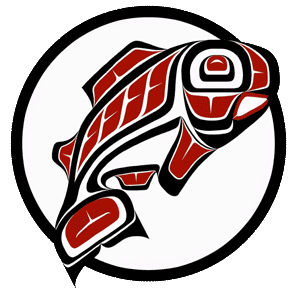Main Content
Good performance management is a continuous, positive collaboration between supervisors and direct reports all year round.
In order to be successful, employees need to know what is expected of them and how they can most effectively achieve those expectations. As a supervisor, it is your job to:
- Clearly communicate expectations
- Provide employees with the tools, training, and information they need to succeed
- Offer regular, timely, and constructive feedback
- Be reasonable and fair when evaluating performance
- Recognize successes and achievements
- Address performance issues in a proactive and timely manner in order to resolve them before they become significant
Good performance management helps build high-functioning, engaged teams.
Other benefits of effective performance management include:
- Motivated and productive employees
- Increased retention of good employees
- Reduced costs related to recruiting and training new employees
- Less time dealing with corrective action issues
- Positive departmental reputation as a great place to work
If you have any questions about performance management, talk to the UWT HR team.
Good performance management starts before the employee is even hired.
Hiring the right person for the position and setting expectations for onboarding makes performance management much easier.
To hire the right person you need a clearly defined position. Make sure you have an up-to-date job description. When filling a vacant position, consider whether departmental needs have changed since the last time you hired for the position. Also consider the role the position plays within the organization and what success would look like for the position. Learn more about the hiring and onboarding processes.
Probationary or trial service periods
New classified employees — or current classified employees moving to a new position — are usually required to serve a probationary or trial service period. The length of this period is determined by the employee’s collective bargaining agreement or employment program.
During the probationary or trial service period, closely monitor and provide feedback on the employee’s work performance and behavior. Provide coaching and counseling as needed and document it.
If you believe the employee isn’t meeting requirements for the position, contact UWT HR to determine if the probationary or trial service period should be ended. While there is no corrective action “just cause” standard for ending a probationary period appointment, there are procedures that must be followed and dates by which action must be taken.
Professional staff don’t have a probationary or trial service period; instead, they serve on an “at will” basis, which means that their appointment can be modified or ended for any reason that does not unlawfully discriminate against the employee or violate public policy.
Annual Performance Evaluations
2025 Evaluations and Job Descriptions due July 31
This year we will also be collecting updated job descriptions. We ask everyone to review and update job descriptions every year, but we are emphasizing and collecting them as part of our action plan in response to the Gallup employee engagement survey. As a campus, we will be focusing on Question 1, “I know what’s expected of me at work.”
Having updated job descriptions, and the conversations that must take place in order to update job descriptions, are critical to ensuring that all employees have a clear understanding of their expectations.
Job descriptions and documented evaluations can be emailed directly to uwthr@uw.edu by July 31, 2025.
If you do not have a current or recent job description in your files, please reach out to our team as soon as possible at uwthr@uw.edu.

The flexibility, teamwork, and adaptability that your staff demonstrate keep teaching, operations, research, and administrative priorities moving forward across UW. Evaluation conversations offer a meaningful opportunity to highlight staff contributions, express gratitude, and provide feedback.
Thoughtful review also helps employees identify opportunities for professional growth and reinforces the importance of their contributions to the campus and University. Knowing one’s contributions matter can greatly impact employee engagement and commitment.
Reviewing the previous year
Performance reviews typically take place annually. The review looks back, assessing the employee’s performance since the last review. The annual performance review includes a written evaluation of your employee’s work performance and a one-on-one conversation to discuss the evaluation.
Be balanced, honest, and fair in your review of the employee’s performance. Focus on the work, not the person.
Acknowledge really good work just as readily as work that needs improvement. It can be easy to take strong performance for granted and only point out problems.
Of course, if an employee falls short of a goal, document that. But if there is a good reason for that failure — some circumstance that justifies the missed goal — explain that as well.
Evaluation requirements
Your team may consist of professional staff, classified staff covered by one or more collective bargaining agreements, classified staff covered by civil service rules, and temporary employees. While performance management principles are the same for all employees, you may have different evaluation tools based on employment program.
Professional staff
Annual performance evaluations must be completed by the deadline in order to ensure eligibility for merit increases. Template forms are available below, but departments may use their own forms.
Classified and represented staff
Annual performance evaluations are mandated per union contracts and should be completed as soon as possible and no later than the annual deadline.
- SEIU 925 and WFSE: Described in Article 34 of the SEIU 925 and WFSE contracts. Please use the Classified Staff Evaluation Form.
- UAW Research Scientist and Engineers (Assistant, 1, 2, 3, 4): Described in Article 23 of the UAW RSE contract.
- Advisors must still complete performance evaluations even while they remain in dynamic status quo.
Temporary and Student Staff
Performance evaluations are not required. We do recommend checking in to give feedback and ensure expectations are clear.
Employee input
Give the employee a copy of the performance review form you are using and make sure they understand how the form is used.
If your department doesn’t already require that staff complete self-evaluations, consider asking your employees to provide written input on how they think they performed over the past 12 months. This input should address achievements and obstacles as well as goals achieved or not achieved. The employee’s input can help you remember specific performance details as well as provide insight on how you can best support them in the coming 12 months.
After you and the employee have discussed the evaluation, both of you must sign the form. If the employee is hesitant to sign the evaluation because they do not agree with it, inform the employee that their signature simply means that they have read the document. The employee is allowed to write a letter of response, detailing their view of their performance and how it differs from your evaluation.
Written Evaluations must be sent to UWT HR for storage in the employee’s personnel file.
Planning for the upcoming year
Now that you have evaluated and discussed the just-completed performance review period, it is time to look forward to the next year.
Designing an employee’s goals should be a joint effort between you and the employee. Allow the employee a voice in their own performance management. Encourage them to advocate for their own professional growth.
Set goals
Here are some helpful tips for writing goals:
- Set goals with not for the employee. Employees who help set their own goals are more motivated to achieve them.
- Use the SMART formula for setting goals:
- Specific, Measurable, Achievable, Relevant, Time-bound
- Tie individual goals to departmental goals. Doing so helps the employee see the importance of their own work and increases their job satisfaction.
- Assess the employee’s competencies. Does the employee need to develop any skills or knowledge to successfully perform their job?
- Consider the employee’s long-range professional goals. Do this year’s goals help the employee reach their long-range goals?
Document
Document the employee’s goals, including any needed training and professional development. Once completed, be sure the employee has a copy. Both you and the employee will want to refer to the document throughout the coming months.
UWHR encourages departments to incorporate the review of telework agreements into the performance review process to ensure both performance and work location agreements are reviewed annually. Learn more about hybrid work, including telework agreement forms, and policy and best practice guidance.
Performance Management Resources
While UWT HR officially collects performance evaluations once per year, we encourage you to provide feedback to your direct reports on a regular basis so that you are celebrating their successes and providing constructive feedback in real time.
Foundational information for supervisors can be found in UW Professional & Organizational Development’s Employee Experience Toolkit. Additionally, POD now offers their Management Fundamentals courses at no cost to departments.
Giving Effective Feedback
During any evaluation, whether an official review or informal conversation, it's important to mindful of how feedback is delivered.
UWT HR endorses the BIRCH model, which focuses on identifying observed behavior, having a two-way discussion with clear expectations, and providing support where needed.
LinkedIn Learning has many useful videos and courses such as:
- Giving Feedback (4 minute video)
- Giving and Receiving Feedback (30 minute course)
Find more training, learning and development resources on our webpage.
Recognition
At any time, you can boost employee engagement by recognizing the good work of your staff. Recognition can be awarded individually or collectively, formally or informally, publicly or privately.
Employee satisfaction and commitment increases when employees:
- Are recognized for their achievements
- Know that their contributions matter to the organization
Recognition is most effective when it takes place on a regular basis and in a variety of different ways. It is also important that recognition activities be aligned with the culture of your unit or department. The Employee Recognition webpages offer many ideas for acknowledging your staff’s hard work.


